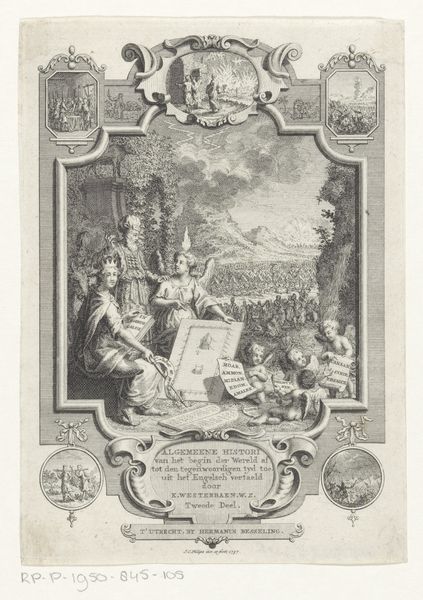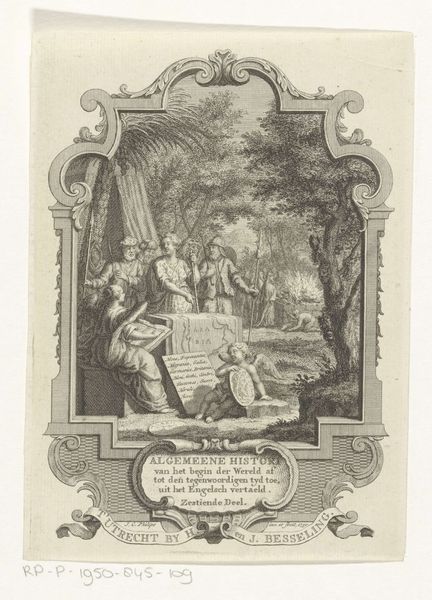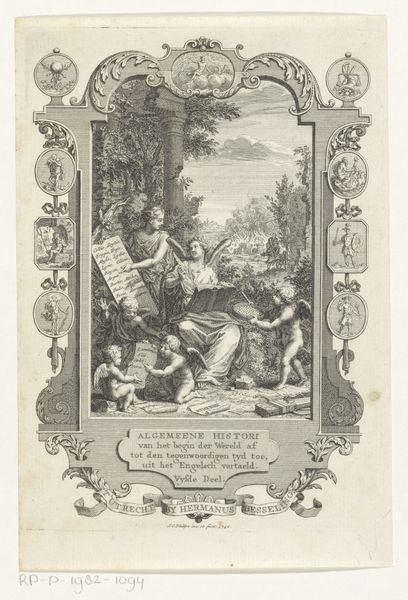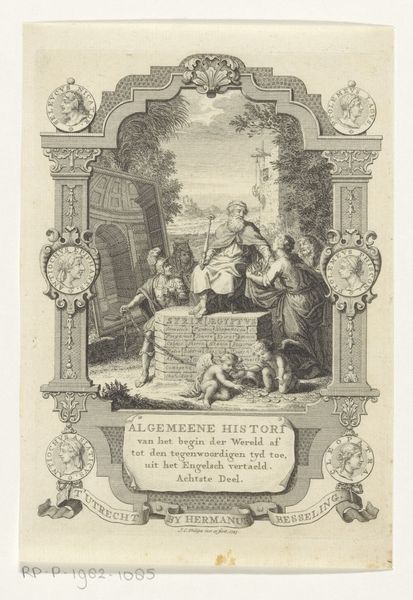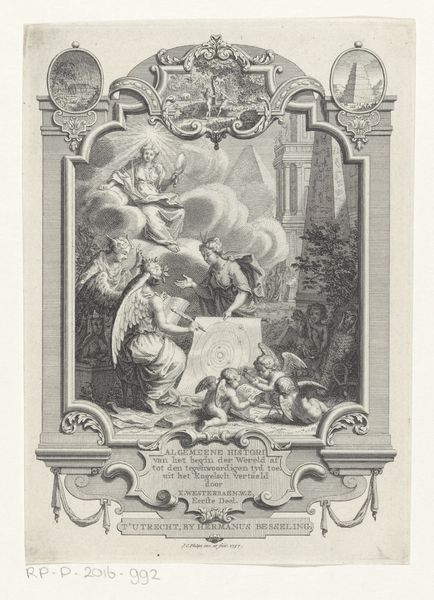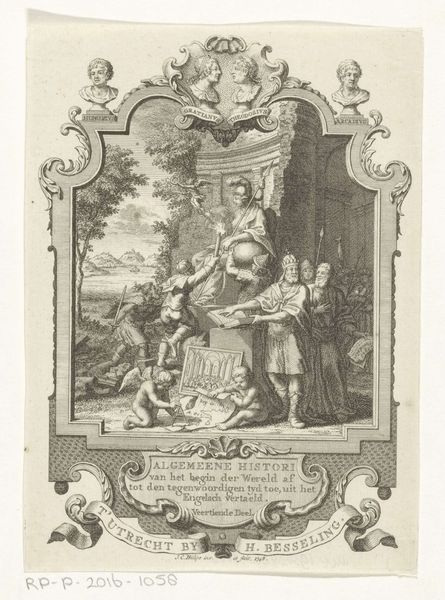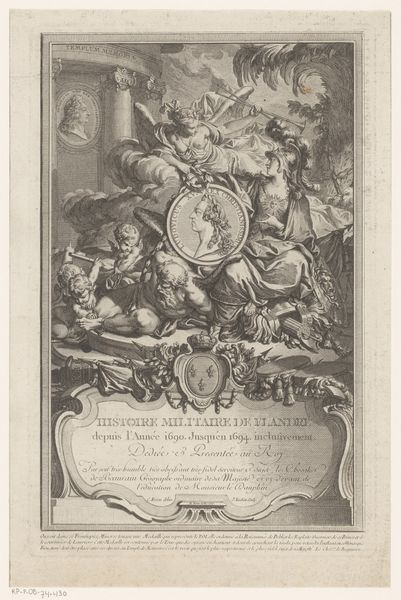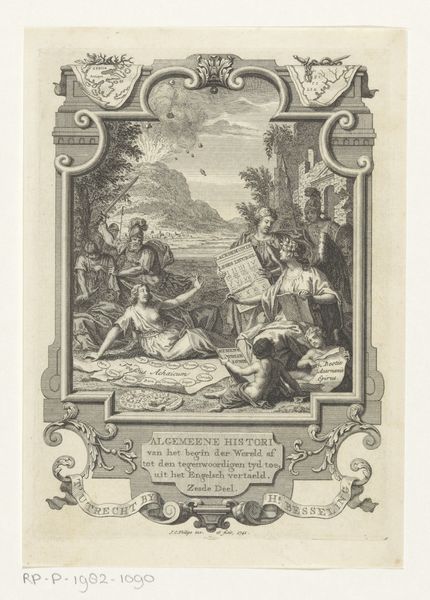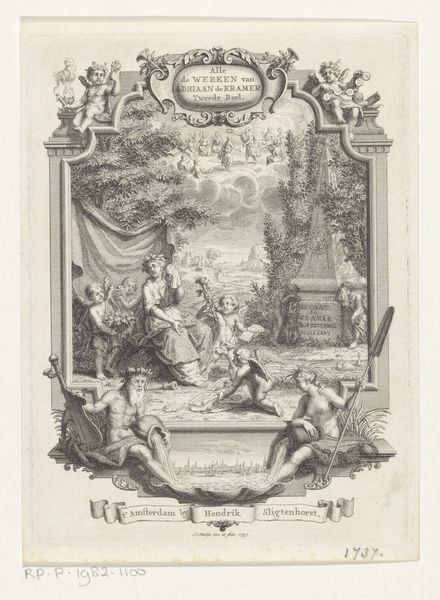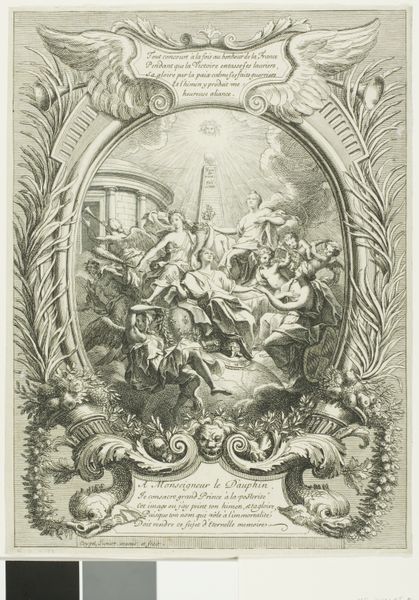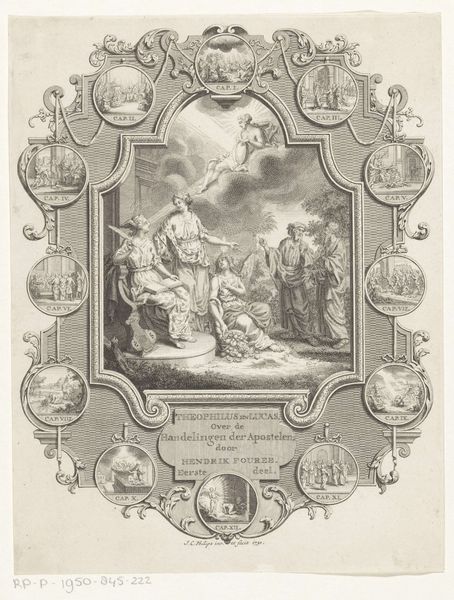
print, engraving
#
allegory
#
baroque
# print
#
landscape
#
classical-realism
#
figuration
#
line
#
history-painting
#
engraving
Dimensions: height 169 mm, width 121 mm
Copyright: Rijks Museum: Open Domain
This allegorical image was etched by Jan Caspar Philips in the 18th century. Etching involves coating a metal plate with wax, scratching an image into it, and then dipping the plate in acid. The acid bites away at the exposed metal, creating lines that hold ink. It’s an indirect printmaking process, but with a great deal of control. The texture in this print is remarkably intricate, from the folds in the allegorical figures' robes to the lush foliage in the background. The artist has skillfully captured the quality of light and shadow, creating a sense of depth and volume, all through the crisp application of linear marks. Prints like this were essential for circulating images and ideas in the 1700s. They could be reproduced many times over, and the relative ease of production, compared to painting, opened up visual culture to a broader audience. Philips’s meticulous technique reflects the increasing demand for detailed and accessible imagery during the Age of Enlightenment. This print wasn’t just an artwork; it was a vehicle for knowledge and a product of a rapidly changing media landscape.
Comments
No comments
Be the first to comment and join the conversation on the ultimate creative platform.
